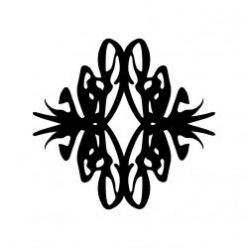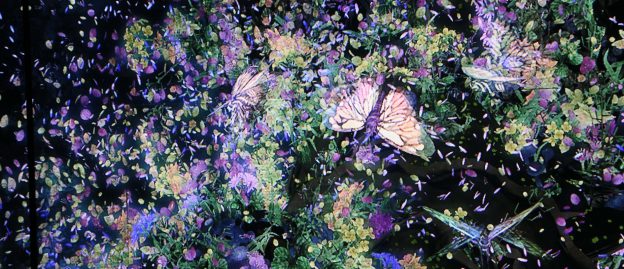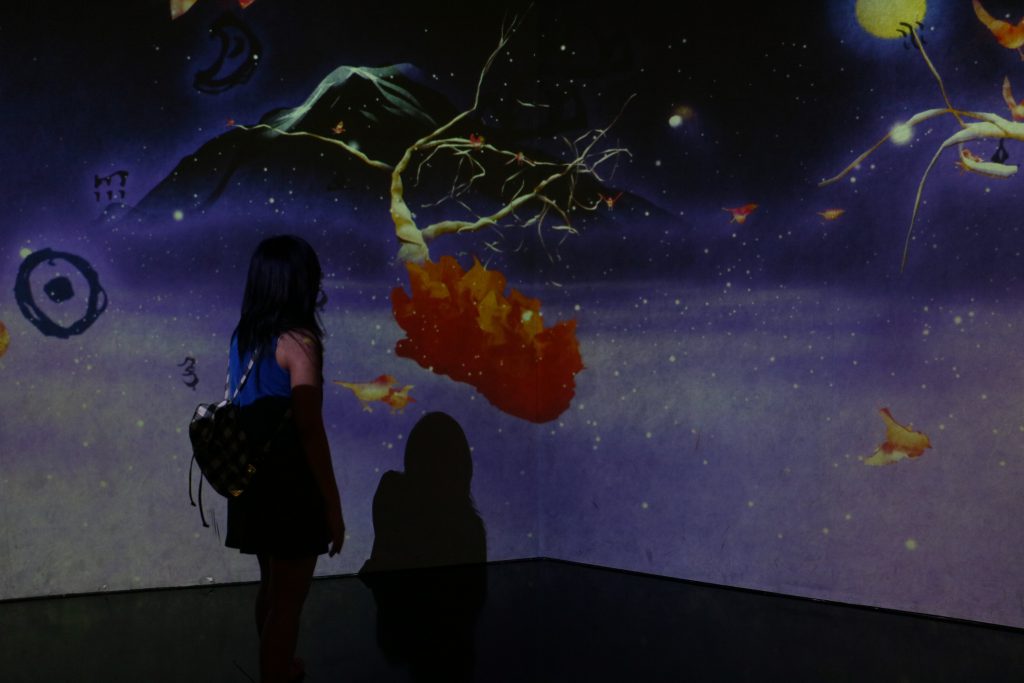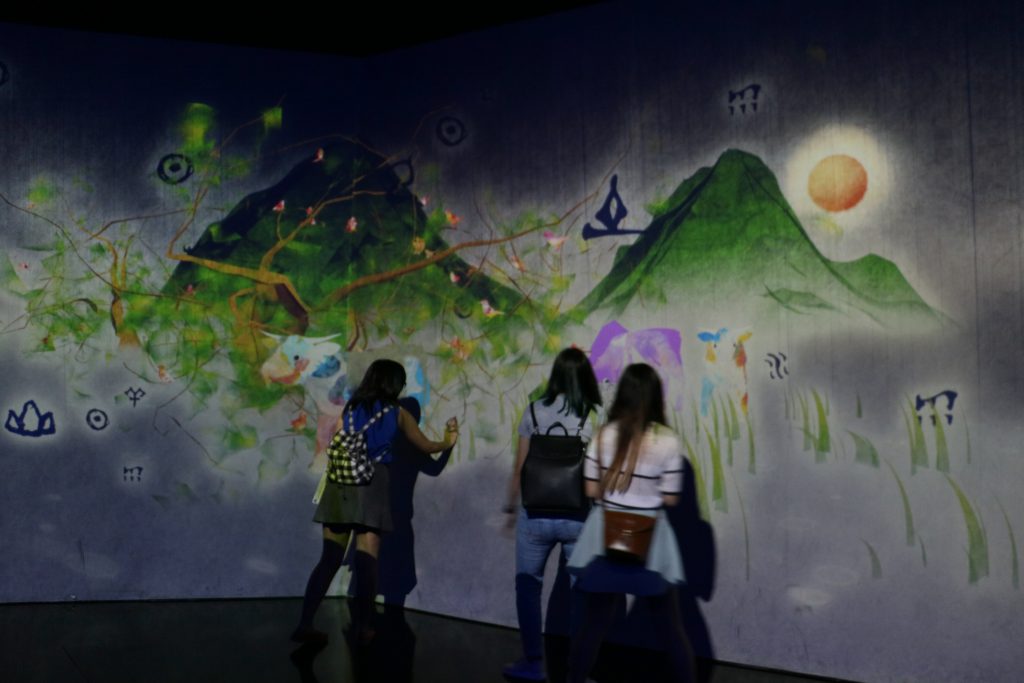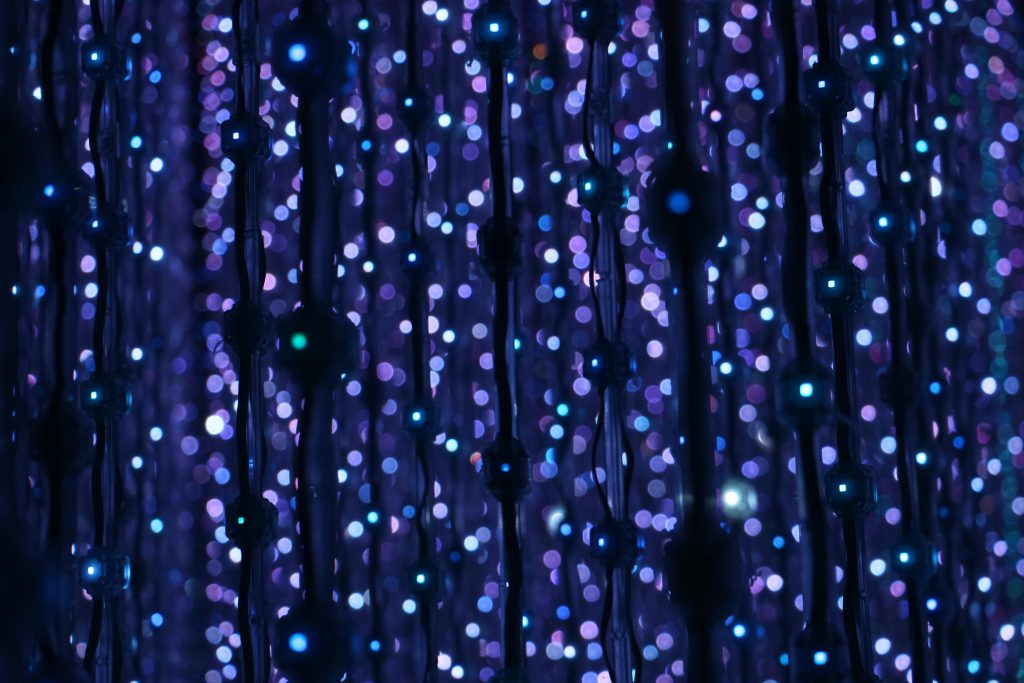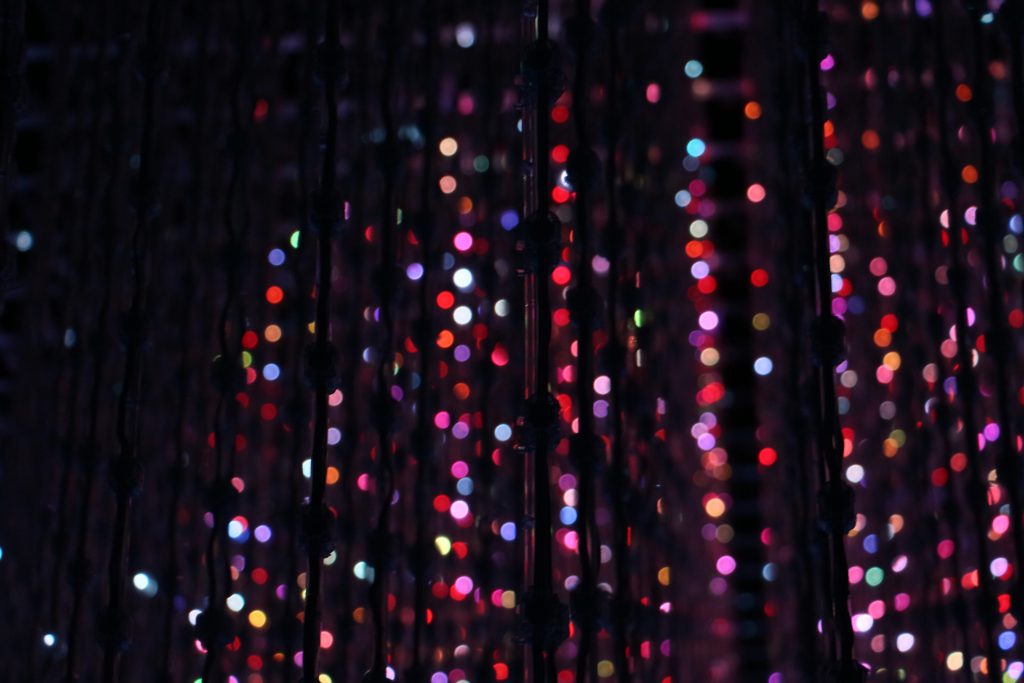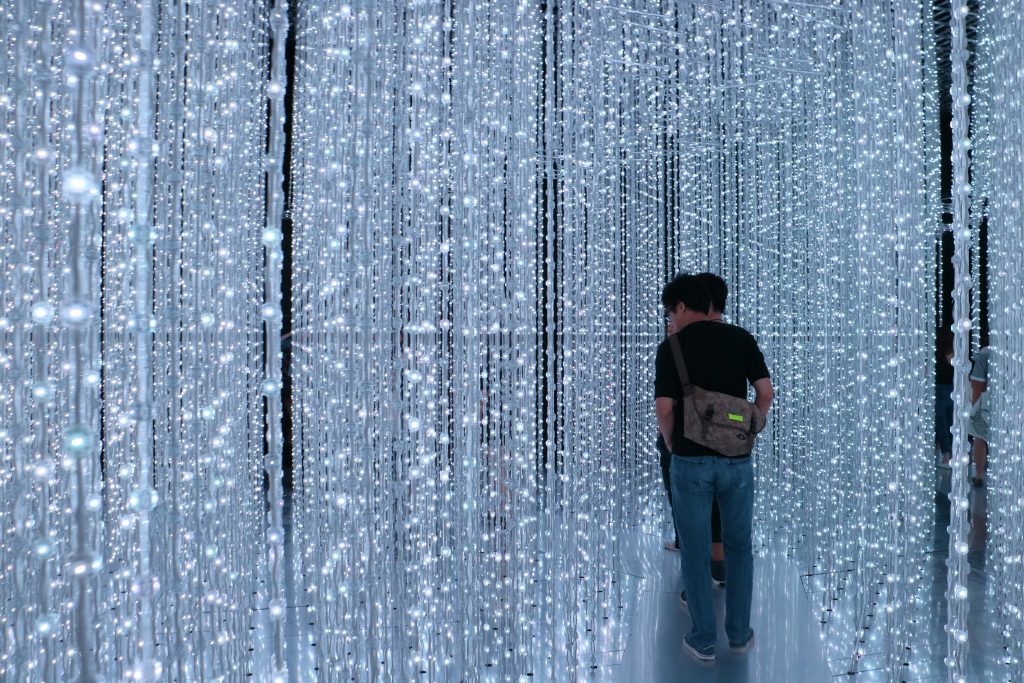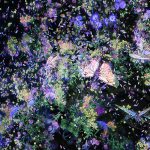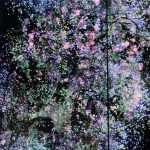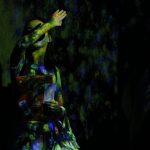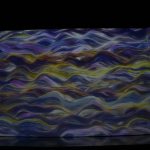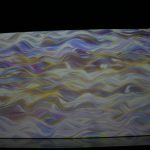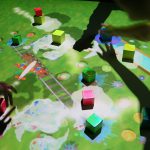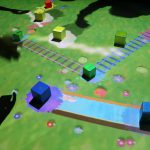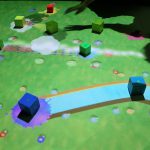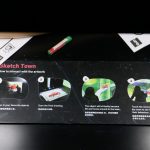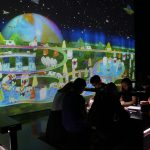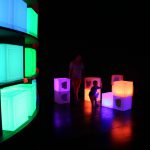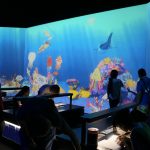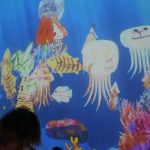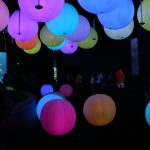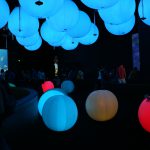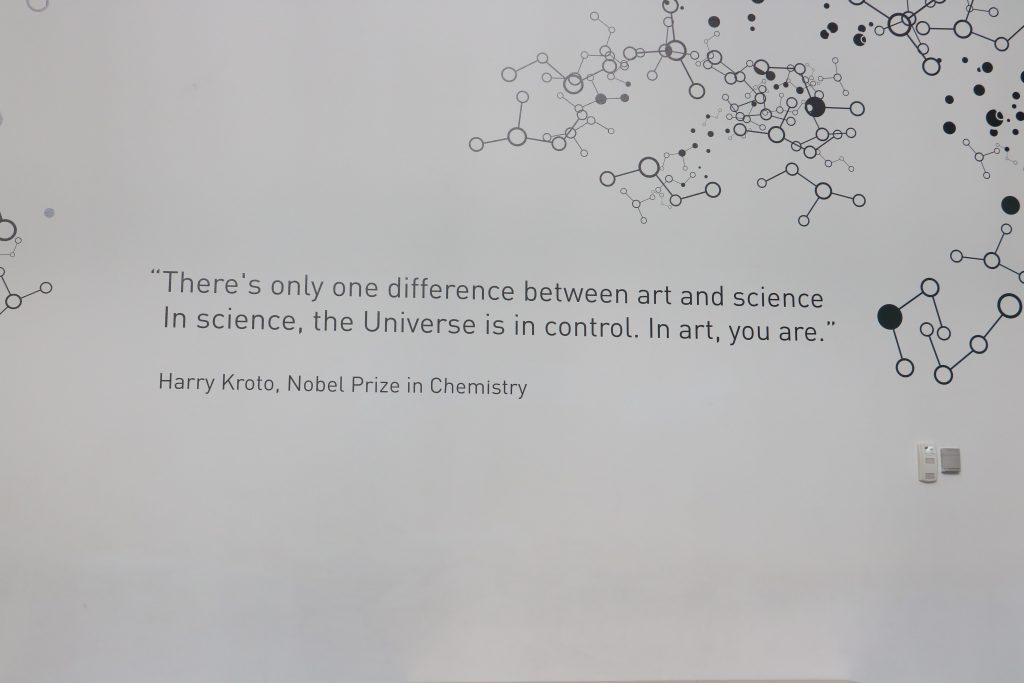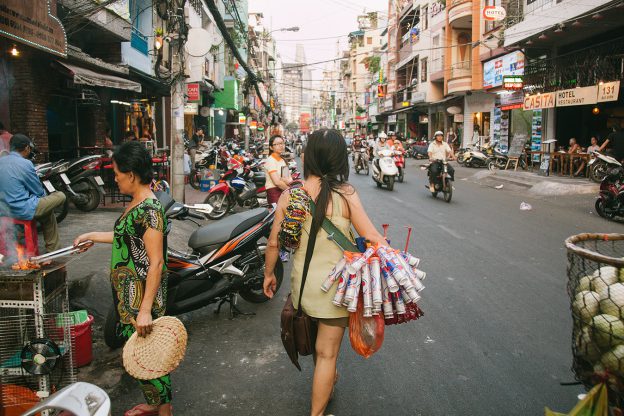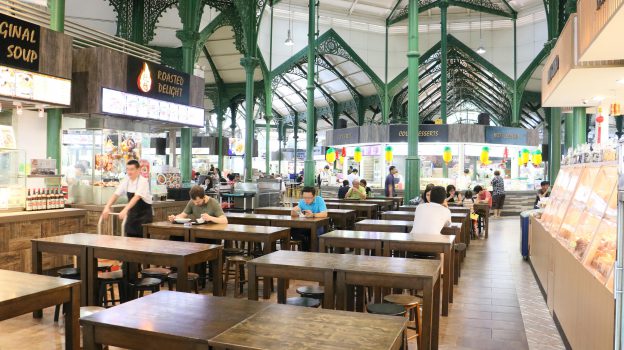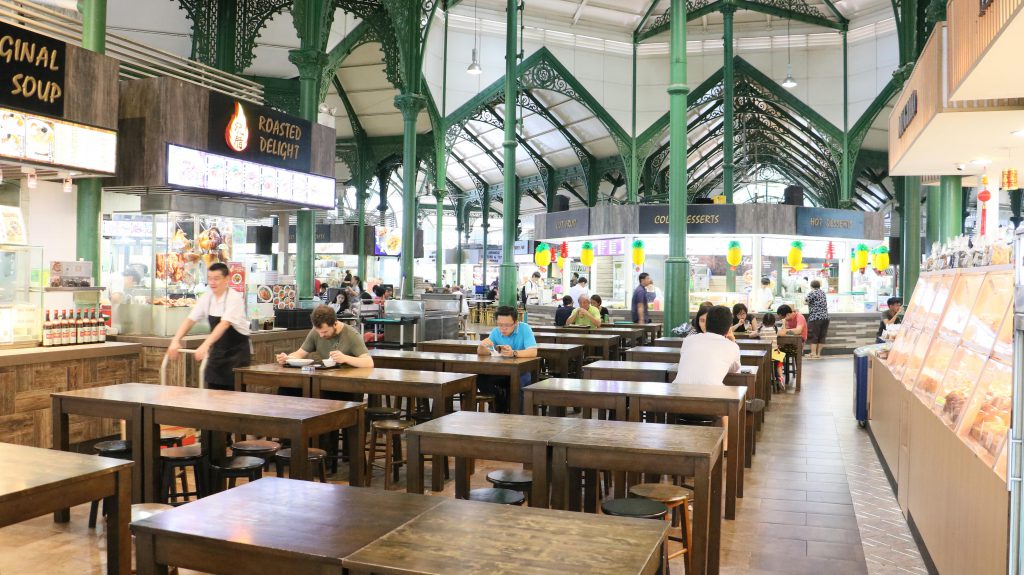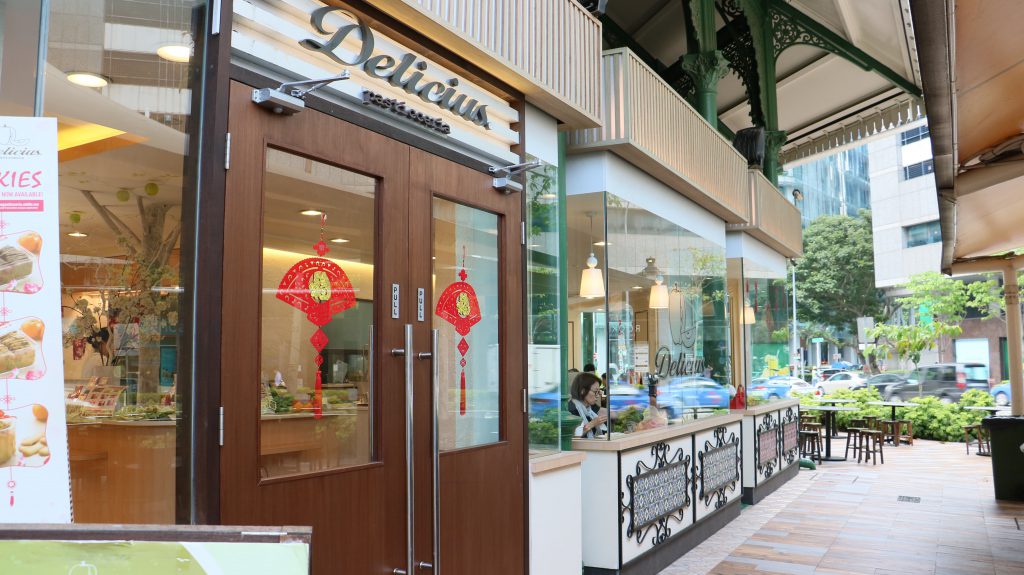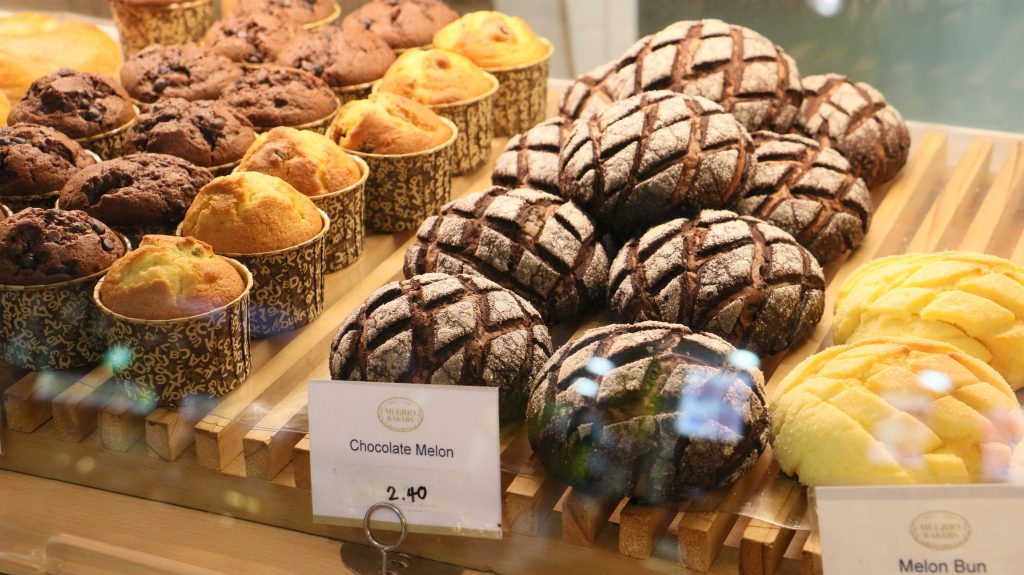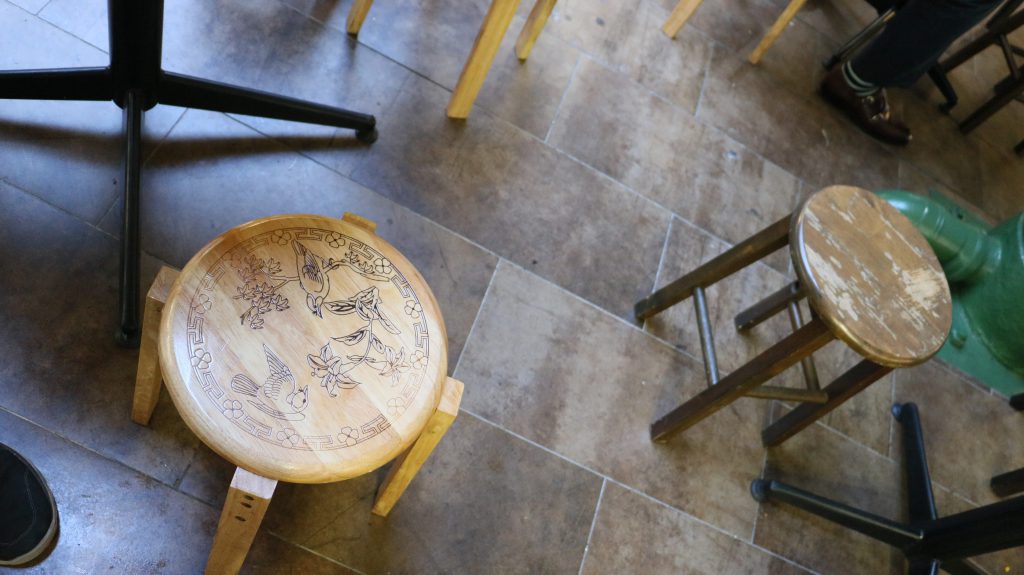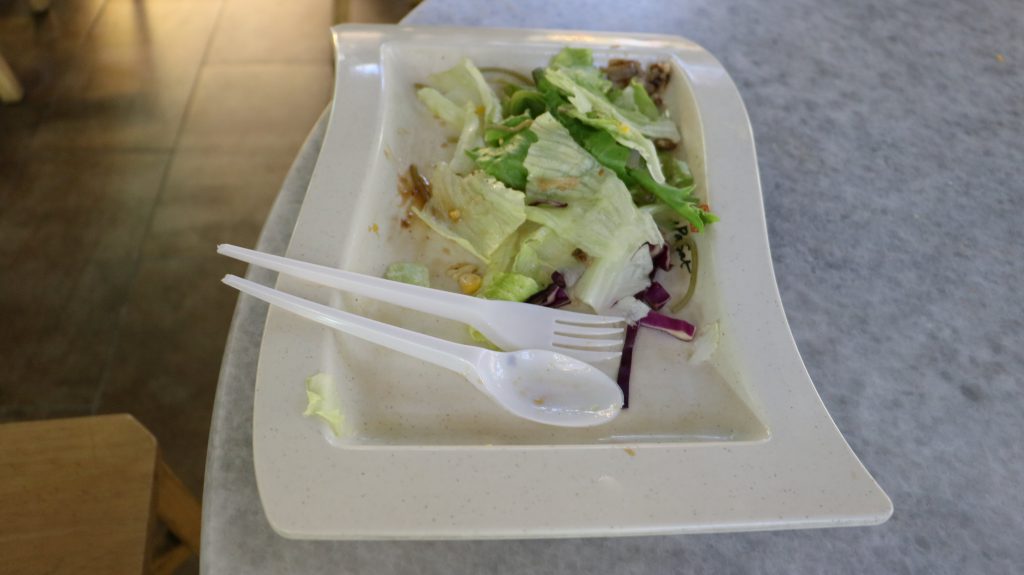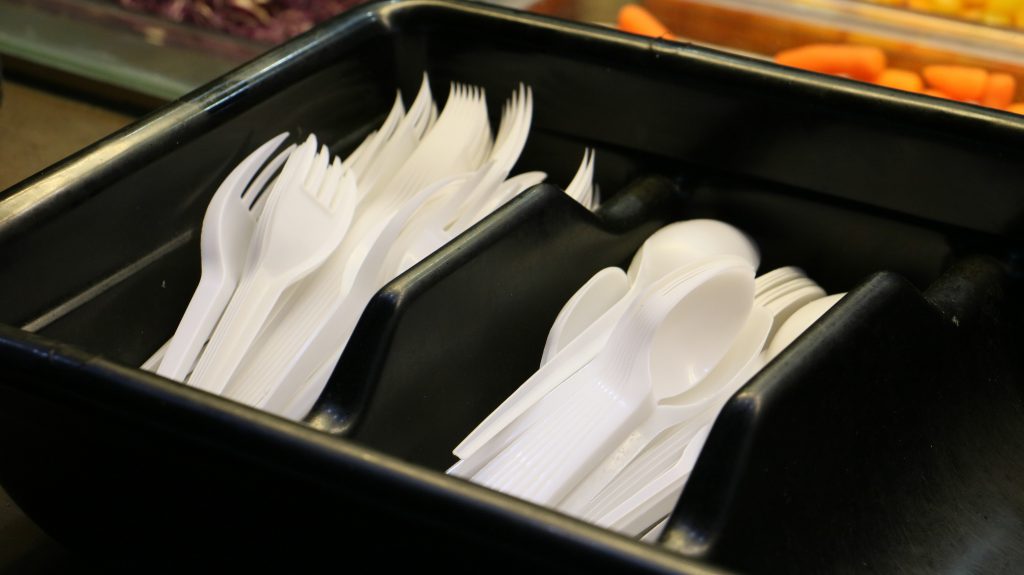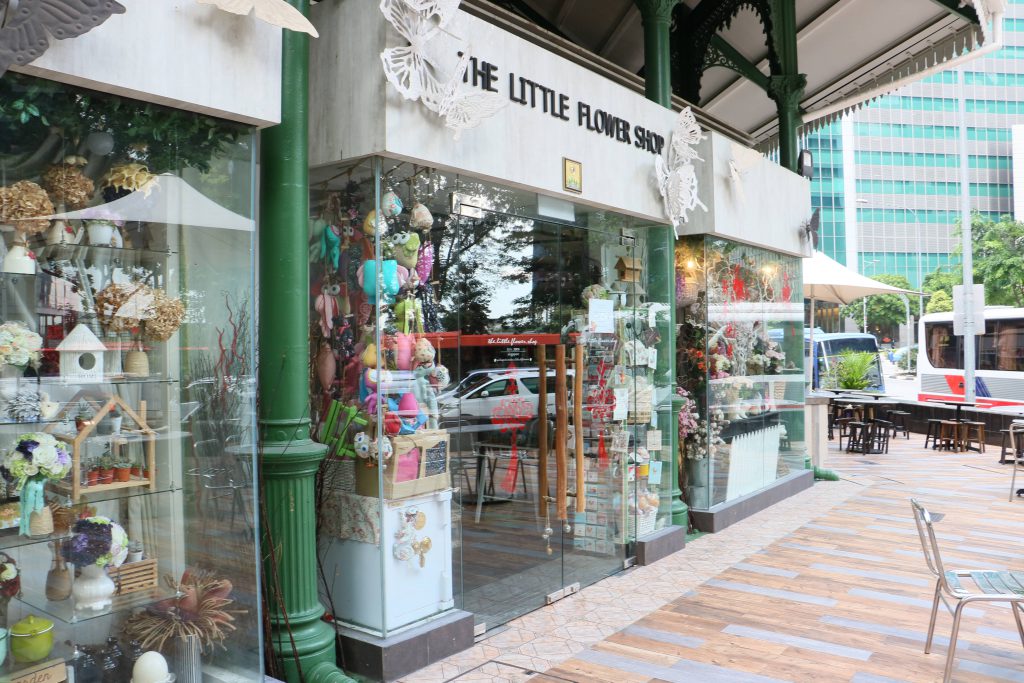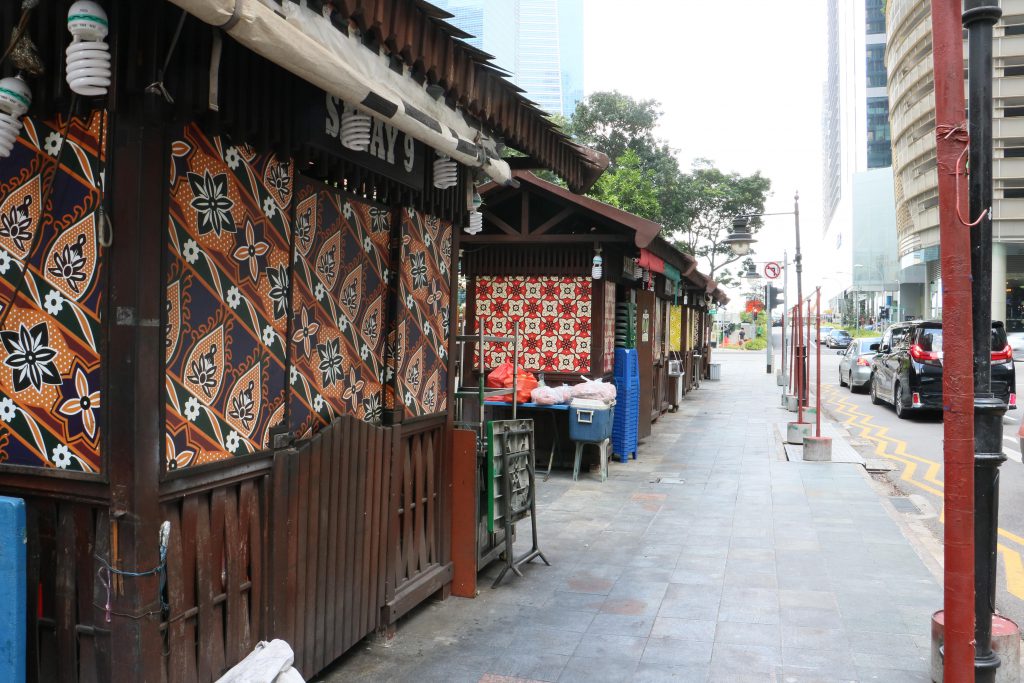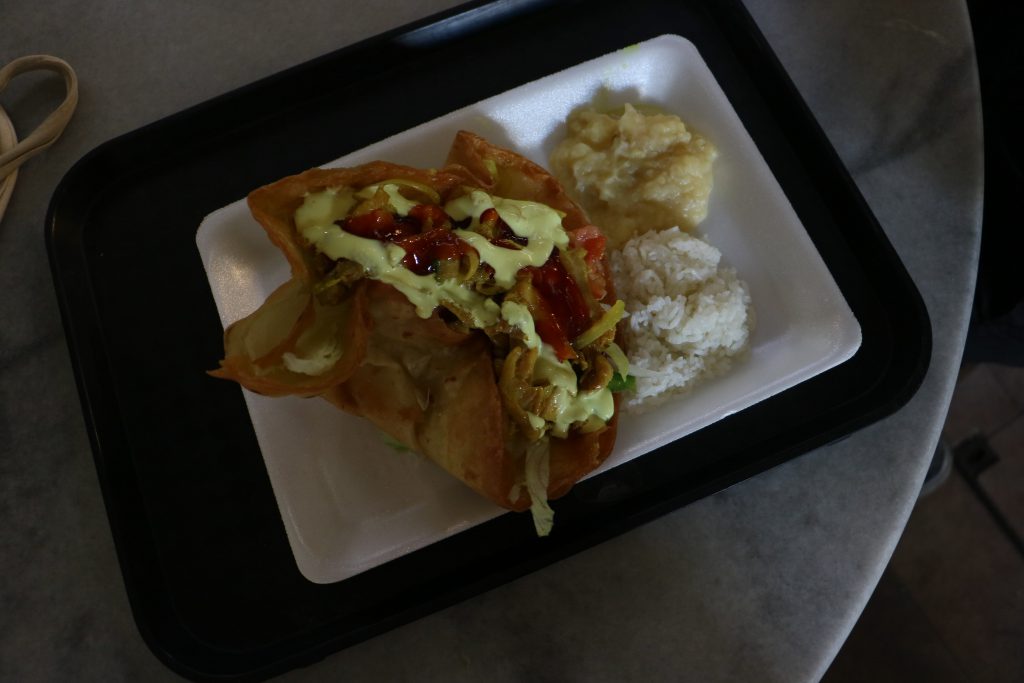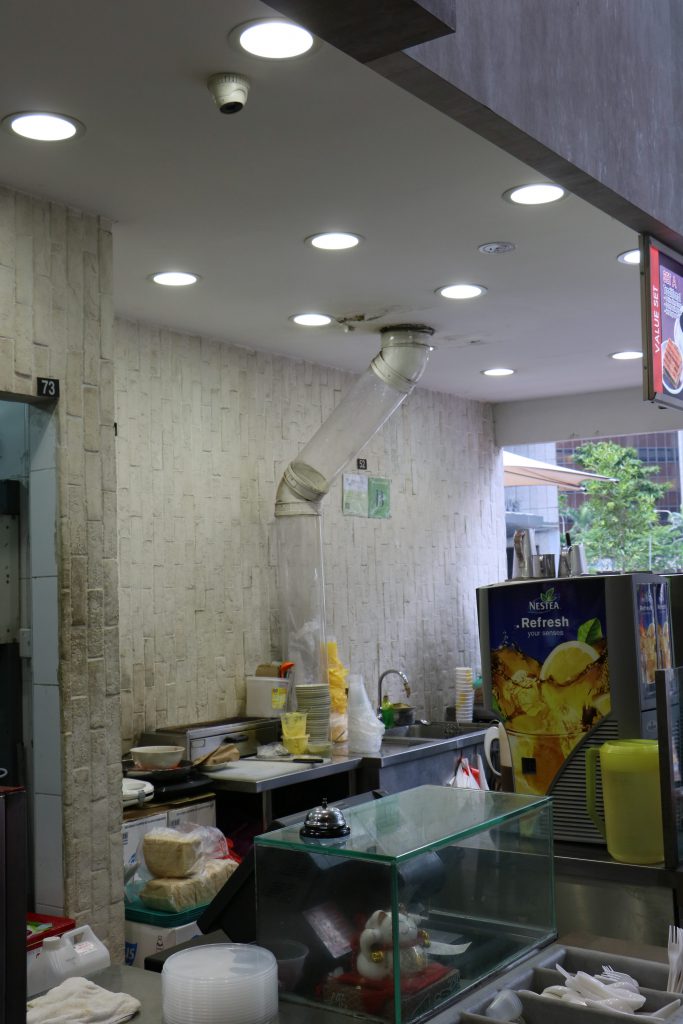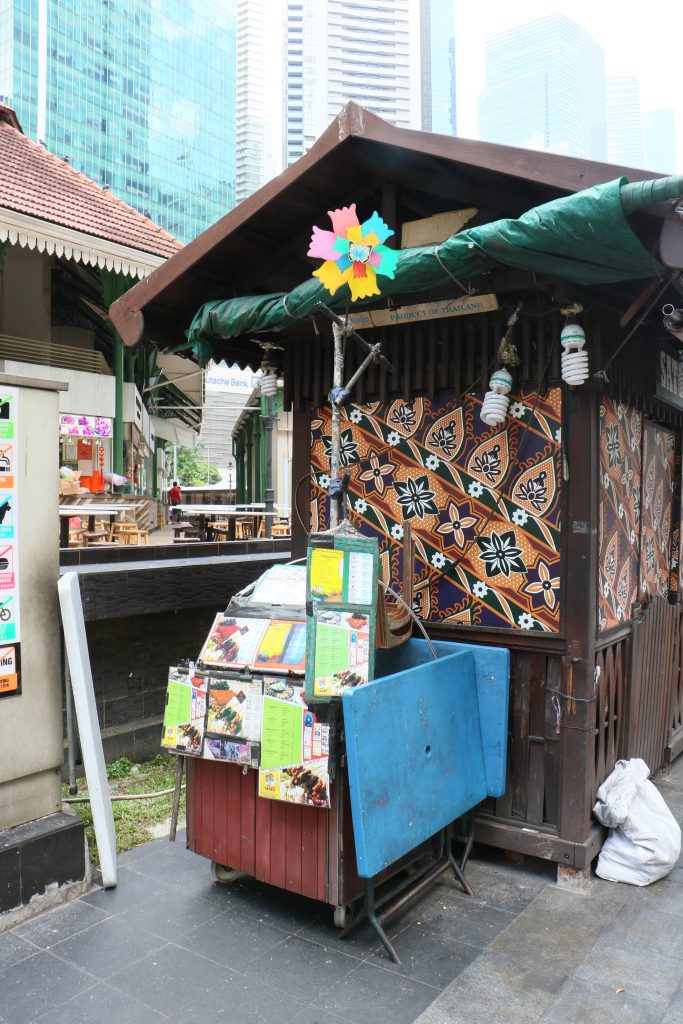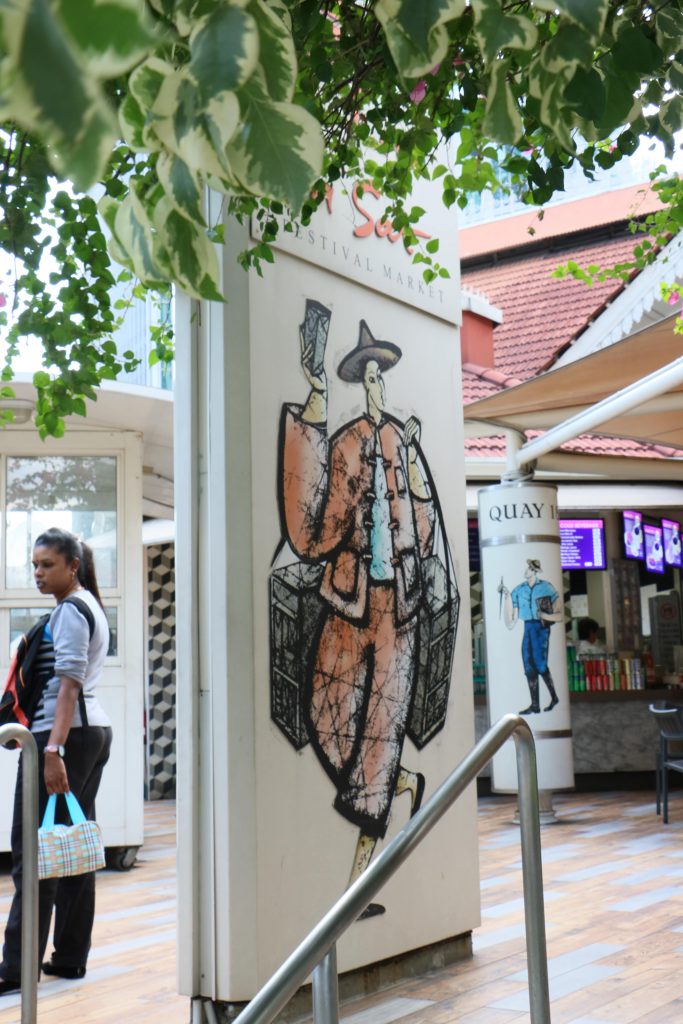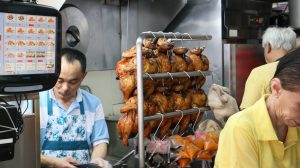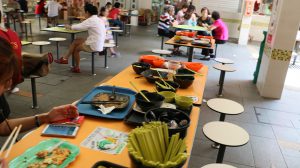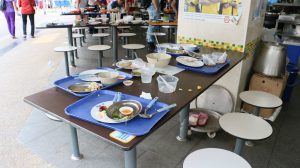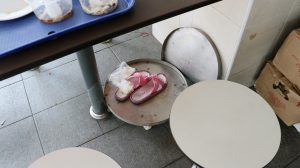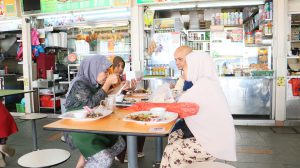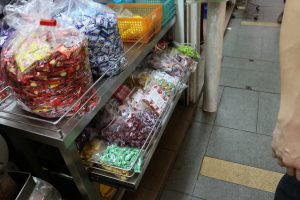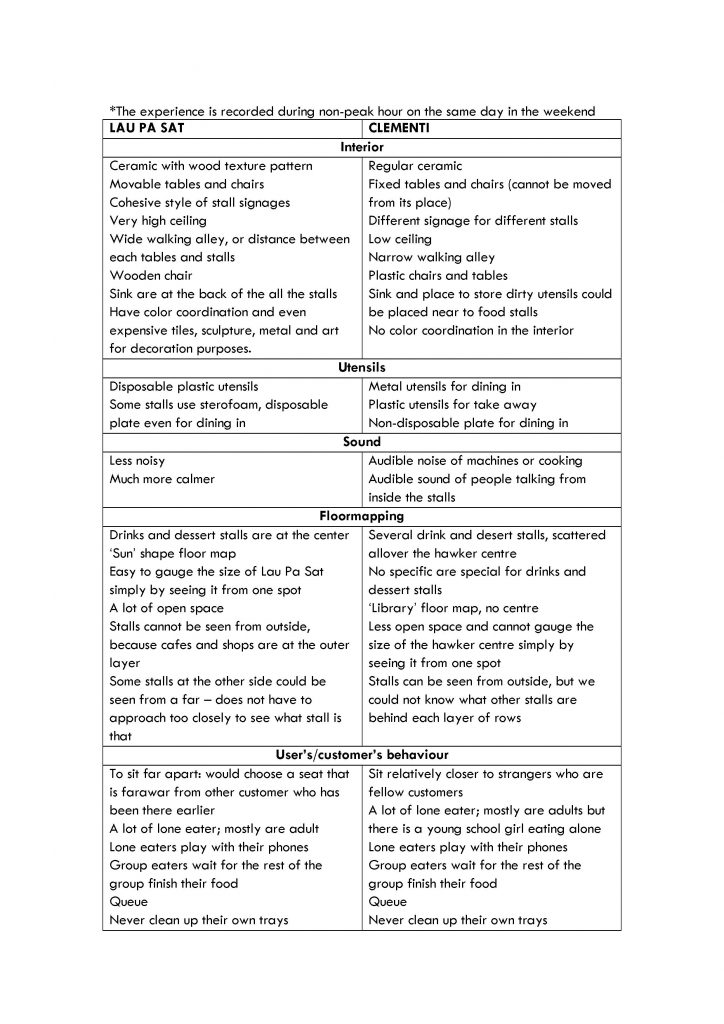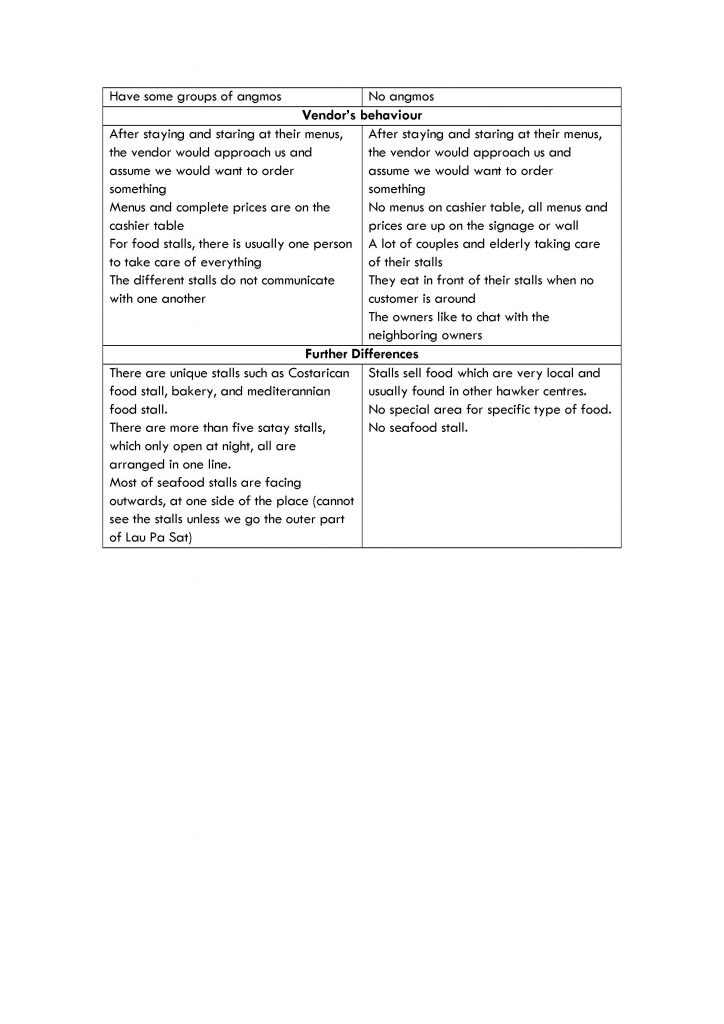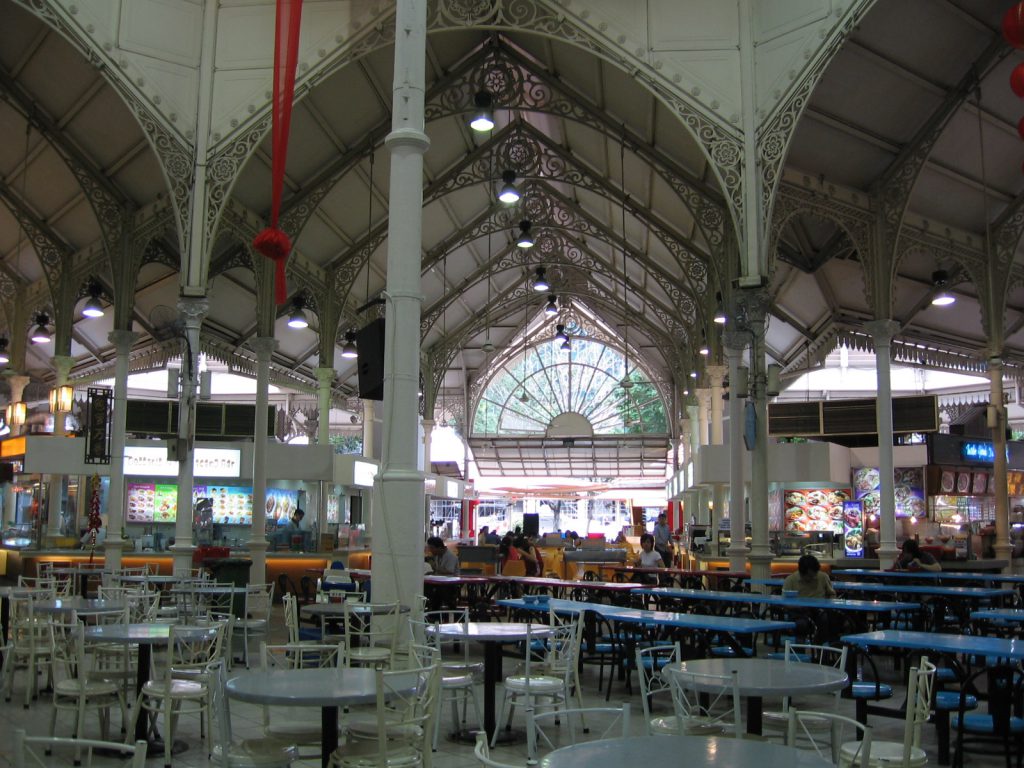I cannot be more than grateful to be able to visit Future World exhibition as a class trip and being explained by the TeamLab member himself, Takasu. Overall, it was an eye-opening experience about how close we are to the ‘future’, where everything is third generation computing, and able to turn non-technological things into a piece of technology in an instance – in the exhibition, projections of animation on tables, walls and things react to our presence and actions. I feel like I was in the future, fully immersed that I almost forgot most of the world out there is unlike Future World right now.
My favourite installation for me is the Story of the Time where Gods were Everywhere, at the Park Session. This is the installation where the rain of ancient caligraphy could turn into ‘real objects’ when we touch it. For example, if we tap unto the caligraphy with double circle, it would become a sun in that ‘world’. Then, if we tap the animal symbols before there is food such as grass, they would die. Wrongly tap a fire symbol would burn the whole forest. It reminds me a lot about the creation of the world in the Bible, where everything is in its right order so that no creature suffers. It is so impressive to me too because different audience are able to create different world, and one could change the other’s world. We can become ‘gods’ in this installation, like literally.
The Story of the Time where Gods were Everywhere Photos
However, the most unforgettable piece is the last installation, Crystal Universe. Visually, it is really breathtaking that I thought they were all diamonds or stars. Such strong visual is forever embedded in my mind it create a very high standard for the aesthetic of installation art. Sadly, there were no enough time to really feel the entire 4D experience by supposedly ‘swiping stars and planets’ in the mobile app. But this is really the most gorgeous installation I’ve ever seen.
Crystal Universe Photos
At the end of the tour, there was a lecture that was short but sweetly revealed the art concept behind the whole Future World: the Japanese or eastern perception of beauty. Never I expect that would be the inspiration, because the installations are so futuristic – who gonna think it was inspired closely to the eastern traditional perception of beauty? The western beauty theorem ‘direct us’ while the eastern ‘surround us’. I must admit the beauty, feeling and experience of the exhibition are multi-directional that it feels like another world. This is one great lesson for me as an artist and product designer.
NATURE Section – Interactive installation where the ‘flowers’ we step on will die and more will grow in the place we do not stand on; animation of the sea. Both are inspired from Japanese traditional screen.
TOWN Section – Immediate urban planning; move the block and you move the whole infrastructure on the screen; draw your buildings and vehicles and you might see them on the screen; building blocks that change colors; interactive table
PARK Section – A place for you to play with other visitors; hopscotch!; create your own fish; become a god and create your world.
SPACE Section – Immerse yourself in the celestial space and cosmos.
